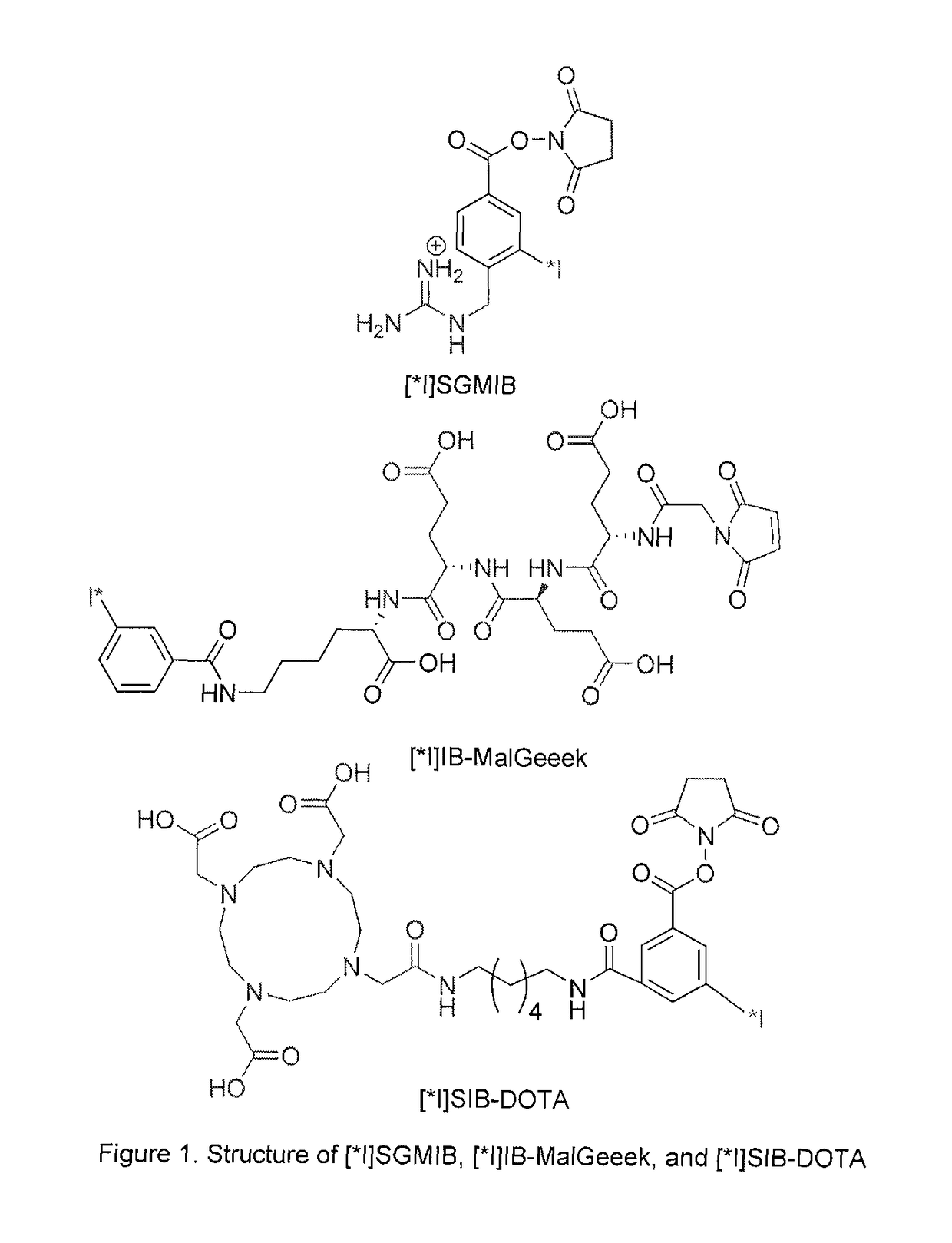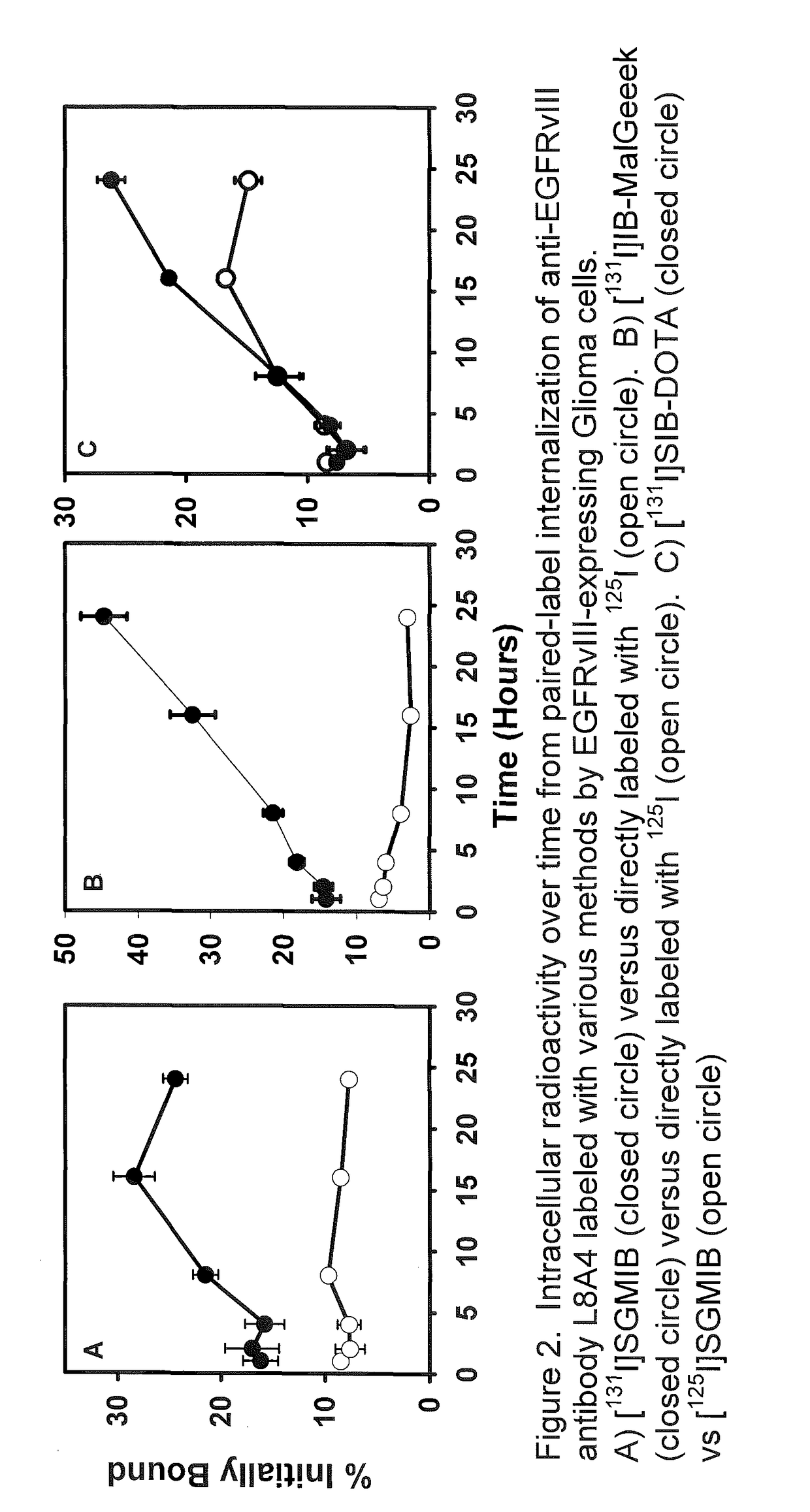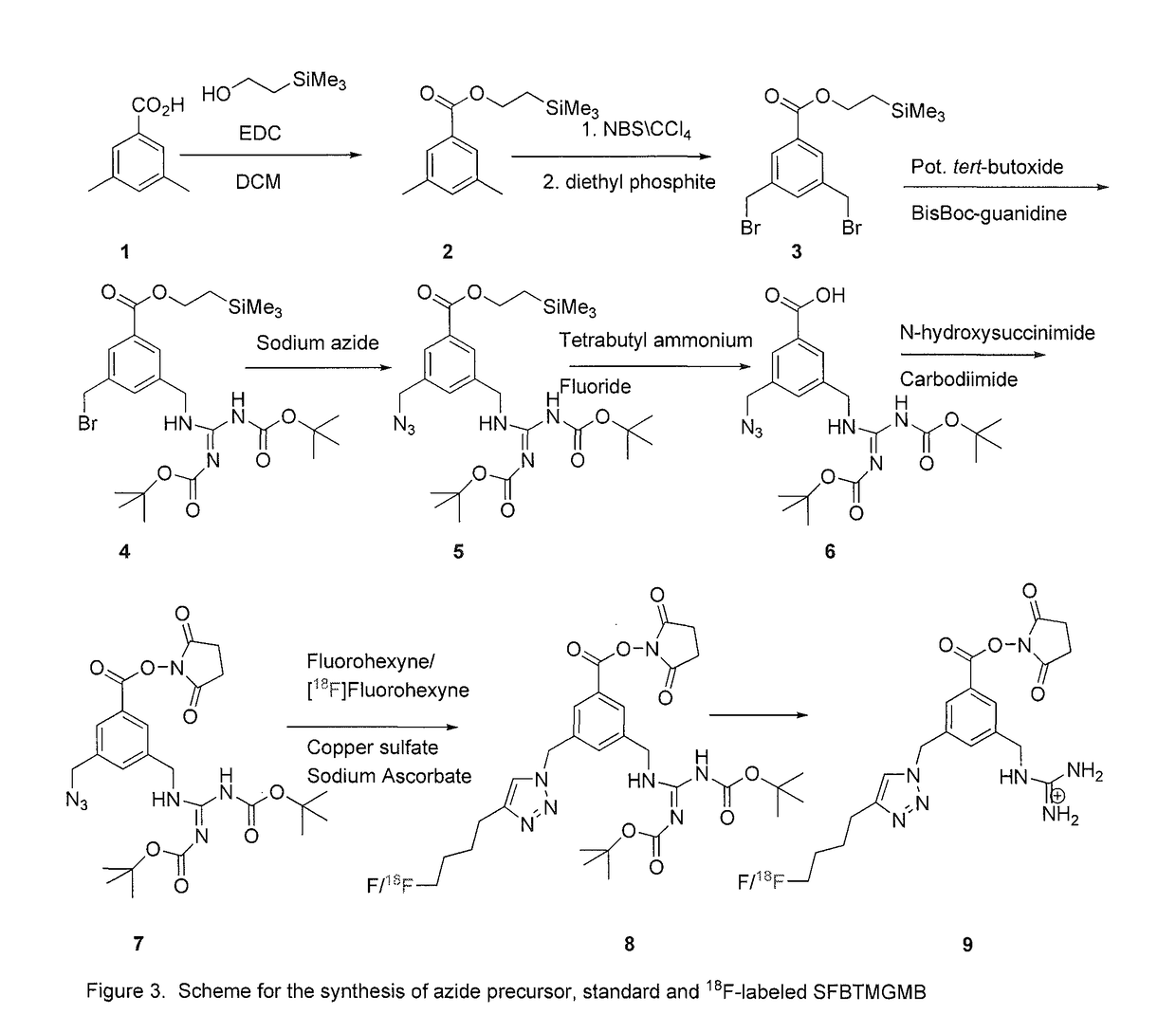Prosthetic compounds for labeling internalizing biomolecules
a biomolecule and prosthetic compound technology, applied in the field of prosthetic compounds for labeling internalizing biomolecules, can solve the problems of radioactive degradation products that can then rapidly escape from tumor cells, and the radioactivity is no longer present within tumor cells to allow imaging or treatment of tumors, etc., to achieve effective radioactivity retention and delivery
- Summary
- Abstract
- Description
- Claims
- Application Information
AI Technical Summary
Benefits of technology
Problems solved by technology
Method used
Image
Examples
examples
[0055]The following examples are set forth as representative of the present invention. These examples are not to be construed as limiting the scope of the invention as these and other equivalent embodiments will be apparent in view of the present disclosure and appended claims.
Synthesis of N-succinimidyl 3-((4-(4-fluorobutyl)-1H-1,2,3-triazol-1-yl)methyl)5-(guanidinomethyl)benzoate (SFBTMGMB)
[0056]In this molecule for fluorine-18 labeling, two important design elements, the active N-hydroxysuccinimidyl ester and the guanidine function, were incorporated. Unlike radioiodine, which can be easily introduced by the electrophilic substitution of tin moieties, the approach for labeling with fluorine-18 is not straightforward. In particular, introducing 18F on the aromatic ring using standard radiosynthetic methods is not practical with a molecule analogous to N-succinimidyl 4-guanidinomethyl-3-iodobenzoate (SGMIB). Normally, for 18F-labeling, it would be possible to displace a leaving gro...
PUM
| Property | Measurement | Unit |
|---|---|---|
| general structure | aaaaa | aaaaa |
| radioactivity | aaaaa | aaaaa |
| radioactive degradation | aaaaa | aaaaa |
Abstract
Description
Claims
Application Information
 Login to View More
Login to View More - R&D
- Intellectual Property
- Life Sciences
- Materials
- Tech Scout
- Unparalleled Data Quality
- Higher Quality Content
- 60% Fewer Hallucinations
Browse by: Latest US Patents, China's latest patents, Technical Efficacy Thesaurus, Application Domain, Technology Topic, Popular Technical Reports.
© 2025 PatSnap. All rights reserved.Legal|Privacy policy|Modern Slavery Act Transparency Statement|Sitemap|About US| Contact US: help@patsnap.com



